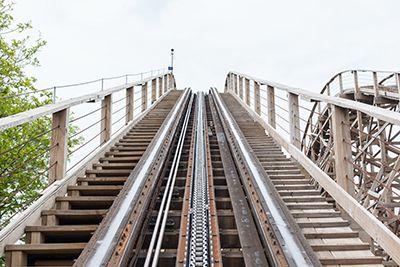Every year, millions of people flock to amusement parks seeking the thrill and adrenaline of their favorite roller coasters. With over 400 amusement parks and attractions in the United States alone, amusement parks in North America rack up over 300 million guests annually.* Even though the chances of getting seriously injured on a ride at an amusement park are slim (around one in 18 million),* there is a lot that goes on behind the scenes to maintain such high safety standards, and that’s where Olympus’ nondestructive testing instruments can play a role.
NDT Inspection Helps Ensure Roller Coaster Safety Stays on Track
Roller coasters and other rides are exposed to the same cyclical loading as bridges and cranes. Without regular maintenance, the constant loading and unloading of weight on a ride can cause cracks to form in the welds and bolts that hold the structure together. To inspect the rides without compromising the overall integrity of the structure, safety inspectors use nondestructive testing (NDT) methods to determine the status of the welds on different ride components so that regular maintenance can be performed.
There are many components of a ride that are inspected:
Thrill-a-Minute Rides Inspected in No Time with UT and ECT
UT and ECT are used both when a ride is newly built and for maintenance throughout its lifespan. UT uses ultrasonic sound waves to detect any subsurface flaws or discontinuities in the ride’s welds, while EC techniques are used for the inspection of the roller coaster tracks and cars. Since the parts can be inspected without disassembly, the rides can be back in service as soon as they are cleared.
Safety standards that regulate amusement parks call for daily inspections of rides as well as a comprehensive preventative maintenance program. The main goal of these requirements is public safety, but a side benefit is good old-fashioned fun.
*Statistics for the US only, according to the International Association of Amusement Parks and Attractions (IAAPA), www.iaapa.org.
Related Content
3 Benefits of Our Stress Corrosion Solution Over Penetrant/Magnetic Testing
Rope Access on the Rise: Hanging Out with the EPOCH 6LT Flaw Detector
Get In Touch


